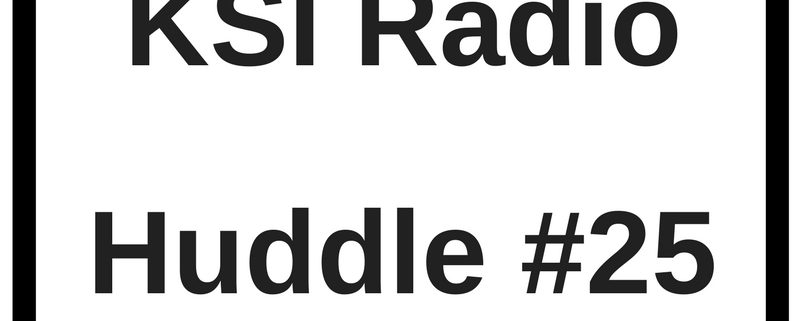Hoping to catch up to the other schools in strength & conditioning
At the end of a coaching session where I was giving back, along with a number of other of former elite athletes in a specific sport, the coordinator introduced me to a young man who he explained was a teacher at a private school who had been entrusted with the task of introducing ‘strength and conditioning’ to his school, with the specific intent of ‘catching up to the other schools in their association as far as strength and conditioning’.
I didn’t want to say anything to the young man, to spoil his eagerness, so I kept a straight face. But inside I cringed – ‘catch up to the other schools in strength and conditioning?’ Why would you want to do that? It should more accurately described as ‘catching down’.
Let me explain.
In the 1970s not many high schools had gyms and in the ones that did have, there was no formal programming and no ‘strength and conditioning’ service provision. Firstly because there was no such thing as a ‘strength and conditioning coach’, as the term ‘strength and conditioning’ was an afterthought by a professional organization with a strength focus that belated wanted to expand their focus without changing their acronym (you can read more about that in my original writings on this subject in ‘So You Want to Become…’). And secondly because organized physical preparation (as I prefer to call it) was not even provided to the majority of western world elite adult teams at that time.
In the early 1980s in Australia the majority of 18 year and older elite athlete that I worked with (and there were thousands) were what I called clean skins. They had never done formal physical preparation. I only had to undo the imbalances that their sport had created in their body. I summarized at that time it usually took three years of solid supervised and individualized training to clean them p to the level of being injury free for the most part for the rest of their career.
Fast forward to the second decade of the 21st century and what’s changed? I inherit broken athletes from the age of 12 upwards. ACL reconstruction, stress fractures of the lower back, shoulder and hip surgery – you name it. So what’s changed?
Many in the respective sports would tell you it’s just the sport – it’s inevitable. I don’t agree, and my experience doesn’t support this. Some will say the athletes are bigger and stronger and the impacts are greater. Really? Aside from non-specific strength tests, my experiences and observations don’t support this. A more recent trendy explanation is that the athletes specialize too early. Sounds good, and it may be a contributor, but for me this also fails to explain the difference. So what is my conclusion?
In the 1970s and 1980s athletes gaining exposure to formal physical preparation as they entered elite ranks around 20 years of age typically retired at about 30 years or age. So that’s about 10 years. What if that retirement was forced more by physical preparation inducted injury than age or their sport? Now holding that thought for a moment, what if take those same flawed training concepts and applied them to a 20 year old? They would be out of the sport by about 20 years of age!
And that’s my theory. In fact I go as far as to say if a young athlete is talent identified around 8-12 yeas of age, and has the (mis)fortune of being exposed to ‘elite strength and conditioning’ – they will be injured by 16 years of age, undergone significant sports-injury related surgery by 18 years of age, and unable to play their sport by about 20 years of age as a general rule.
So in summary when I see the same flawed training methods applied to adults being applied to young athletes, I fear for their future.
So what makes me conclude that most training is flawed? During my last four decades of seeking answers and excellence in how to train, I have reached certain conclusions and theories on what it takes to create or avoid an injury.
Are my conclusions the same as the masses? No. Should this be a concern? Only if you are a conformist. If your dominant need is to be liked, and to achieve this you need to be like others, then you would be concerned by the fact that I have reached certain theories that differ from the mainstream. On the other hand if you realize that to get a different and ideally better result than the masses, you need to train differently – then you would be excited.
In my opinion the only improvements we have seen in training is in the ability to measure it, the technology of equipment, and the technology of the surgery to repaid the injuries.
Could it be possible that what the majority – and that probably means you – are doing more damage to good in their training? That is my suggestion. Is it popular? No. Is it easy to discredit? Yes. Does this what ever else is doing approach to training result in the best possible sporting out comes? No.
So if I am on track, why do most continue on this path? The answers lies there. Because most do it. And the majority are so insecure about their actions they seek comfort in the masses. Will the get away with it? Legally yes, because the interpretation will be that is what is accepted practice. Should they be able to sleep at night? I suggest not, if they have a conscience.
Why I am I so firm about this? I speak for the athlete. My heart goes out to the legally minor young athlete who has an adult guide them to life-long, career threatening, quality of life threatening injuries. There is a better way – I teach it openly and have done for decades. I believe that perhaps in the next generation, after my time on this earth, what I teach will be accepted as the final stage of truth as described by 19th century German philosopher Arthur Schopenhauer – ‘accepted as being self-evident’.
But what about the one or two generations of young athletes who paid the price in their ‘strength and conditioning’ training between 1980 and whenever a better way is accepted?
So did I get excited for the young man empowered to bring his school ‘Strength and conditioning’ program up speed with other schools in their association? Not al all. I felt sad for the by-products of this intent. The young, innocent and trusting athletes. They are not, in my opinion, going to ‘catch up’. They are going to ‘do down’ in their athletic development.


